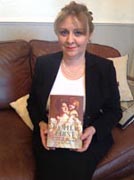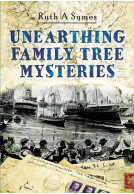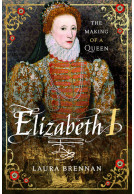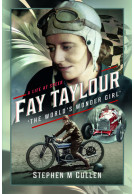Family First (Hardback)
Tracing Relationships in the Past
Imprint: Pen & Sword History
Pages: 223
ISBN: 9781473833883
Published: 12th October 2015
(click here for international delivery rates)
Order within the next 10 hours, 31 minutes to get your order processed the next working day!
Need a currency converter? Check XE.com for live rates
| Other formats available - Buy the Hardback and get the eBook for free! | Price |
|---|---|
| Family First ePub (21.7 MB) Add to Basket | £6.99 |
Husbands, wives, fathers, mothers, children, siblings, aunts, uncles, cousins and grandparents – these are the relationships that structure the family tree and fascinate the family historian. But how much do we really know about how our ancestors lived out these multiple roles? Buffeted this way and that by economic developments, legal changes, medical advances, Two World Wars, the rise of the Welfare State, women’s emancipation and many other factors, relationships between members of our family in the past were subtly different to those of today and continually transforming.
This book is both a social history of the period 1800-1950 and a practical guide on how to set about tracing and better understanding the relationships between members of your own family. What did it mean to be a father in this period, but also, how might you discover the father of an ancestor if his name is not mentioned on the birth certificate? What common ideas were held about the role of wives and mothers, but also, how were multiple births, stillbirths, abortions and infanticides dealt with in the records? What factors might have influenced the size of your ancestor’s family, but also why were its children named as they were? Did pecking order in a family matter, but also, was it legal to marry a cousin, or the sister of a deceased wife? How long could people expect to live, but also what records can tell you more about the circumstances of your ancestors’ last years? A final chapter considers relationships with neighbours, friends and club associates.
As featured in.
Family Tree Magazine September 2016
As featured in.
Family Tree Magazine July 2016
As featured in.
Family Tree June 2016
As featured in.
Family Tree Magazine May 2016
A mix of family and social history covering the period 1800 to 1950, with an extensive bibliography.
B&A FHS Journal No. 163
As featured in...
Family Tree - March 2016
This book is both a social history of the period 1800-1950 and a practical guide on how to set about tracing and better understanding the relationships between members of your own family.
Antiques Diary, Spring 2016
This book is quite different - you should buy it, read it thoroughly, and let it reshape and inspire your ideas about your own family history... This is both an exciting historical exploration and an eminently practical manual that asks provocative questions and poses interesting challenges... Among its great strengths is that it takes current analyses and interpretations from academic historians, medical researches and sociologists, and presents them in a brilliantly accessible and comprehensible fashion... I have been a family historian for more than 40 years, and a professional historian for over 30, but as I read it I was constantly encountering new ways of looking at my family. It's a great book - essential reading I would say.
Who Do You Think You Are? - Alan Crosby
This is a fascinating mixture of social philosophy, exploring our ancestors' experiences from within (as much as we can), and new angles on research techniques.
Your Family Tree - February 2016
Familiarise yourself with the social context of the times in which your ancestors lived and the relationships they shared with regular Family Tree contributor Ruth Symes's latest book. Covering 1800 to 1950, you can read up on such gems as what a typical fatherhood was like, how first names were chosen for children, and commonly-held ideas about wives and mothers. Not simply a social history, this is also a practical guide to tracing your family relationships and contemporary attitudes, looking behind official personal records to bring the lives of our forebears into sharper focus.
Family Tree
Find out how you might identify an ancestor's missing father or godparents, why (and how) your relative survived multiple pregnancies, and whether your ancestor's position in the 'family pecking order' was significant. There's a rich seam of knowledge and know-how to tap into that should help you put flesh on the bones of names on your tree, and gain a better understanding of your ancestors' own relationships.
About Ruth Alexandra Symes
After a career in academia, education and editing, Ruth A. Symes now writes full-time. Her work, including many articles in the genealogy press and several family history books, brings together family history and social history in ways which aim to inspire the ordinary reader. Ruth is married with a young daughter and lives and works in Manchester. Her blog is at www.searchmyancestry.blogspot.co.uk


















